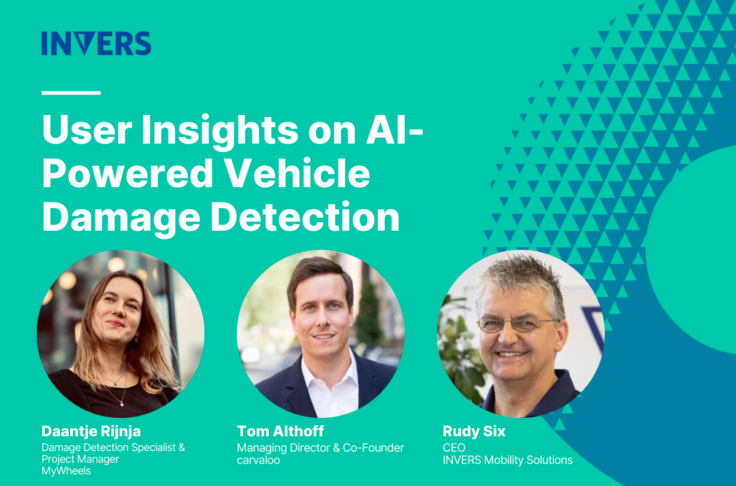4 Ways Mobility Will Evolve – Predictions from MOVE America
Summary
Despite the challenges that shared mobility currently faces, there is general optimism towards continued growth. Four predictions for the future of mobility include:
- OEMs will continue to work on their own projects without much collaboration across the industry
- Current mobility providers will expand their service offering to continue building value among consumers
- People’s needs will continue shaping the growth of new mobility development
- Data will play a key role in advancing the possibilities of mobility.

1. OEMs will continue to work in silos
Regardless of shape and size, two-wheels or four-wheels, OEMs have traditionally developed their connectivity module independent of each other. From the OEM perspective, this means differentiation and having a competitive edge in the business-to-consumer segment. But in the shared mobility space, this can be seen as both a challenge and an opportunity.
For shared mobility operators, it can be a challenge to work with different types of connectivity modules, and having some level of standardization with built-in IoT is helpful. Just like with consumer electronics, people enjoy the benefits of having one type of USB port to charge and connect various devices. As a result, working with Apple’s USB-C alternative can be a hassle. “A similar scenario is likely to play out with OEM IoT and connectivity,” says Venkatesh Gopal, Business Development and Partnership Manager at movmi. “OEMs will want to differentiate their IoT and go the Apple way.”
At the same time, OEMs can also make it easier for shared mobility operators. For a micromobility OEM like ACTON, partnerships are what drives their growth. Janelle Wang, CEO of ACTON, acknowledges that OEMs work in a vertical space. She says, “Operators want a one-stop shop. We collaborate and work with partners to offer customers speed to market and set a path towards profitability.” By working with partners to provide a full-stack solution for shared micromobility, ACTON takes the hassle out of building your own mobility solution and provides everything you may need to get started. Janelle adds, “One company can’t cover everything and be everywhere, so this model empowers local businesses to grow.”
Meanwhile, there are OEMs who choose to also operate as a shared mobility provider. The benefit here is that OEMs can control the supply chain and how consumers interact with their vehicles. However, Enrico Howe, Sharing Research Lead at unu and independent moped sharing consultant, believes “OEMs that provide mobility services will not be the number one player in the space. They won’t be the ones that rule the game. Their play is long-term with brand recognition, not as a mobility service provider. For example, Daimler launched car2go and pioneered a lot of growth in the carsharing space. But fast forward to today, they have merged and scaled back their operations.”
2. Mobility providers will diversify
Even before the onset of the pandemic, transportation and business models were changing. Ride hailing companies expanded their portfolio, with Uber adding food deliveries and Lyft adding e-bike sharing. At the same time, GoJek already had a plethora of services, from moped sharing to cargo delivery to healthcare service. Since transportation touches on various aspects of people’s day-to-day needs, these expansions could be seen as strategic growth.
Nicholas Williams, Co-Founder of Drive Sally, sees food delivery companies expanding in scope as demand for more deliveries increase, especially as more people are staying at home. “At Drive Sally, we worked with InstaCart and other on-demand platforms, and found some success with these city-based programs. In the long-term, there will be a focus on digitizing more of the partnership process and making it seamless. That means improving insurance checks, how new drivers are added, and more.”
Elliot Kroo, Founder and CTO of Getaround, believes carsharing will begin offering vehicles for various uses. “To avoid the demand peaks you see with carsharing, you can layer different use cases on top of each other. This takes advantage of the different demand segments once you can offer carsharing and ride hailing rentals on the same asset.” As a result, this has allowed Getaround to tap into multiple revenue streams and stabilize the demand for vehicles throughout the days and weeks.
Similarly, a shared mobility operation is not just about focusing on one modality anymore. Johannes Gruenenberg, Head of Sales and Business Development at INVERS, sees more and more operators shifting into multi-modal operations. However, there is no one right way to achieve multi-modality. “It could involve an operator offering more than one vehicle type or class of vehicle. It could also involve one operator offering their vehicles and service within another operator’s app, and vice versa. And finally, it could involve operators integrating into a mobility-as-a-service platform,” Johannes explains.
3. Movement of people will drive the shift in mobility needs
In USA, cities have reported an exodus of people from high priced urban cores to more affordable regions. Interestingly, this movement has not been prevalent in Europe. While the pandemic may have jump started this flow across American cities, it is not unexpected. Elliot from Getaround sheds more light on this: “Cities naturally go through boom and bust cycles, so this current movement of people is not surprising. Even with the decrease in density, at least temporarily, cities are shutting down streets to cars and opening them up to pedestrians.”
To that point, Nicholas predicts people will move out of cities. “I can see 10-15% of people moving to the second ring of the city, which will be about 80 miles out. People will likely buy or lease a car, but there is an opportunity for carsharing in these suburban areas.” “Of course, public transportation will continue playing a key role as the backbone of urban mobility,” Enrico points out. While carsharing and even moped sharing can meet long distance transportation needs, public transportation is what ties different areas within the city together and makes it accessible. Public transportation serves as the core of a city’s transportation infrastructure and is supplemented with other modes for more spontaneous trips or for first-last mile needs.
Despite where people end up living, whether in the city’s downtown or further out in the suburbs, urban dwellers continue to need mobility solutions. People’s default transportation mode should not be the private vehicle. Johannes says, “Industry players need to continue evolving and develop innovative solutions that meet these changing mobility needs.” The modes we are familiar with now may not be the modes that meet next year’s mobility needs.
In fact, tying it back to OEMs, Venkatesh from movmi adds that this is where smaller operators have a competitive advantage. “OEMs are not able to move as fast as locally-based operations. They aren’t as nimble. It is the smaller operators who will be able to offer a tailored solution to cities.” This means there will be a growing opportunity for new, locally focused mobility operators to serve their community.
4. Using data to advance in mobility
Data is king. It is the currency that helps companies better understand customer habits and behaviour. For mobility operators, data uncovers gaps in their current service and allows them to identify opportunities for further growth.
In the short term, data collected from connected cars, bikes, scooters, and mopeds are helpful to providing new features within shared mobility. Janelle from ACTON believes “the future of shared micromobility will be reserving a scooter ahead of time, rebalancing fleets autonomously, and building more charging infrastructure.” A lot of this builds on having more data-driven operations, which will allow shared mobility providers to innovate and develop additional ease and convenience to users.
In order to support full vehicle autonomy in the future, we can build on what we currently know about shared mobility. Venkatesh from movmi says, “Shared and electric is now. Autonomous is in the future. Data from carsharing will help OEMs and operators understand mobility patterns and prepare for an autonomous future.” In other words, being able to understand the supply and demand curves among carsharing users now will provide insights on how to address changes in user needs with autonomous vehicles in the near future.
Between shared and personal connected cars, there is a plethora of data already being collected. “But there is uncertainty on how to use the data,” Venkatesh explains. “Figuring out how to use the data collected will be a major piece of the puzzle.”
Thank you to our panelists who participated in these discussions with us. We also want to thank Highways Today for highlighting key learnings and takeaways from the conference.


